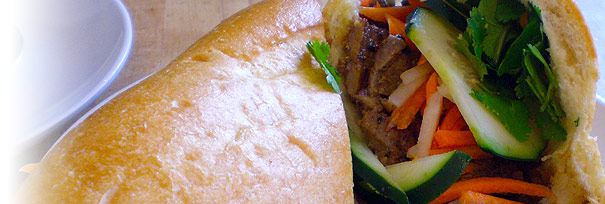Navigating Restaurants as a Prediabetic
Posted Sunday, June 9, 2024Before the Covid-19 pandemic, I was working downtown, parking on the west side of the city and walking a mile to the east side every morning and again in the late afternoon, with plenty of walking in between. As a consequence, my daily exercise was equally dispersed and my A1C --the blood test that measures one's average blood sugar levels over the last three months-- was well within the "normal" range.
Shortly after the lockdowns had imposed many of us to work from home (a quality-of-life perk we office workers otherwise love and appreciate), my walking habits were relegated to the evenings while my carb-tastic lifestyle remained unchanged. My blood sugar numbers soon shot up every year thereafter, to the point that I was soon admitted to the exclusively dubious Prediabetes Club.
As one might imagine, a prediabetes diagnosis pairs well with neither food blogging nor the pasta-infused extracurricular activities of one's Sicilian counterpart. The idea of cutting back on carbs is as distressing as it is gut-wrenching. A strict keto diet would be out of the question.
The simple fact of the matter is: I'm statistically overweight. I'm 6'1" and 208 pounds. My BMI puts me a few points shy of the "obese" category. Carrying this weight is not sustainable.
And yet, I love food. I love cooking. I love visiting restaurants. I love taking my silly food photos and sharing stories around a dinner table. But if I don't change my habits, the ability to enjoy these things will be cut short.
So, what do we prediabetics do about it? Of course, the answer involves everything a foodie hates: Cut back on portions. Cut back on carbs. Exercise more often. Religiously prick our fingers for glucose updates. Pop Metformin pills to help reverse the insulin resistance. Everything that generally sucks.
But it's time to buck up, fatty!
Type-2 diabetes has a so-called genetic link only insofar as poor eating habits and a propensity for being overweight run in families. And my family is no different. My father was diagnosed in his late 20s with diabetes. My mother was diagnosed in her 50s. My younger brother was diagnosed in his 30s. I am, so far, the lone holdout.
There are a couple popular methods of addressing prediabetes when it comes to diet. These methods are widely advertised on the Internet, pitting two distinctly different camps of people against each other. The first camp believes saturated fat is responsible for adversely affecting the body's response to insulin, triggering insulin resistance. Armed with more than 100 years' worth of scientific studies, their claim that saturated fat intake leads to Type-2 Diabetes is compelling.
The second camp of people claim that the true culprit behind insulin resistance is "chronic carbohydrate overdose syndrome" or "carbotoxicity," in which the person is simply eating far too many carbohydrates for the body to handle, leading to insulin resistance. Their high-fat, ketogenic diets also seem to lead to weight loss and improved blood sugar levels, while not necessarily addressing the underlying insulin resistance.
In response to this diagnosis, I've changed my daily eating habits during the work week. I eat far more protein and fats, and cut back on breads and ramen noodles and potatoes. Chicken, eggs, beef and tofu have been my chief go-to proteins, and my fats include avocados, olive oil, butter and whole milk dairy items. I still eat pasta, but I've cut it down to one serving a week or less. Where I can, I replace ramen noodles or pasta noodles with edamame noodles, which have a better, lower net carb value.
But what of restaurants? Nearly every restaurant can be enjoyed with less carbs, I've found, even when I yearn for some of the refined breads, pizza, potatoes and pasta meals.
At the Hyde Park Italian restaurant Forno, for example, my all-time favorite dish was the pappardelle chinghiale, with a red wine-braised wild boar ragout. But in my last visit, I opted for an Atlantic cod served on a bed of vibrant red peperonata: stewed bell peppers, onions, tomato and garlic, with an arugula pesto on top. It was hearty and satisfying. I had an appetizer of veal meatballs, mindful that, yes, it's got some bread in there, but it's not high on the carbometer.
Lower carb intake means more opportunity and excuses to try some of the regional carnivore-friendly establishments, like Lonely Pine Steakhouse in Pleasant Ridge.
Still, I miss the damn pasta and old eating habits. And I know this low-carb thing is going to be a process, with occasional highs and deep, dark, penetrating lows. But if I can stave off the dreaded "D" word (whether that be "Diabetes" or "Death"), I may yet succeed in pivoting my blog and my life accordingly.




 = Outstanding
= Outstanding = Good
= Good = Fair
= Fair = Poor
= Poor